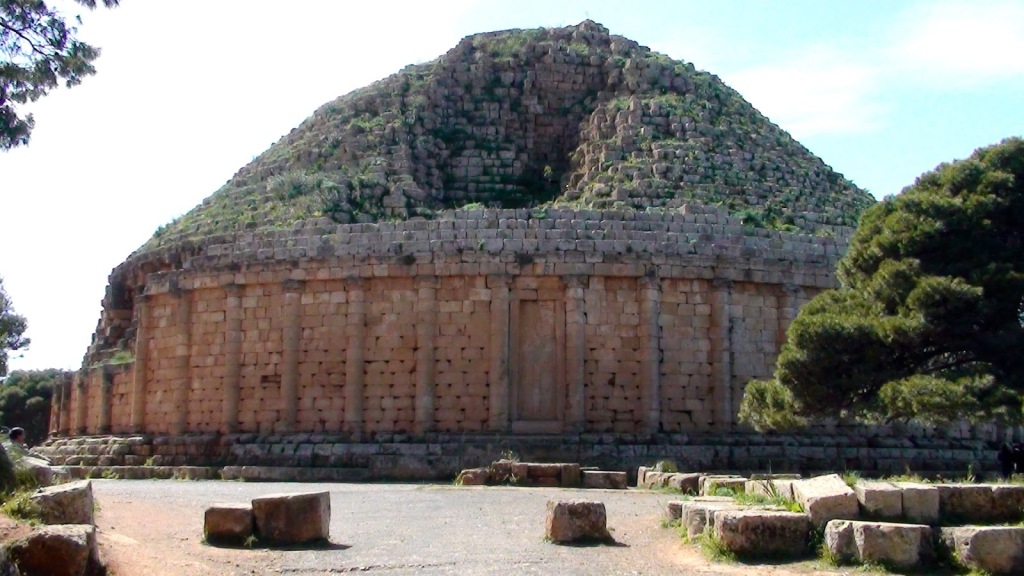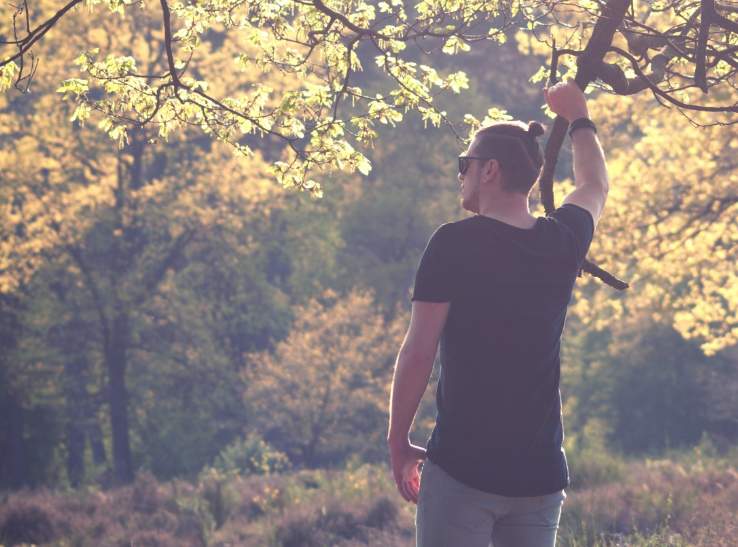The Royal Mausoleum of Mauretania is a tomb situated on the road between the cities of Cherchell and Algiers, in Algeria. This is the final resting place of Berber Juba II and Cleopatra Selene II. Who were the last king and queen of Mauretania? Cleopatra Selene II was the only daughter of the well-known Queen Cleopatra of Egypt and her husband, Mark Antony.
The Royal Mausoleum was built in the 3rd century BC by King Juba II, not just for him and his wife. But as a dynastic funeral monument for their royal descendants. The tomb is known by numerous names. It is occasionally referred to as the Mausoleum of Juba and Cleopatra Selene.
In Arabic, the mausoleum is called the Kubr-er-Rumia or Kbor-er-Rumia. In French, it is called Tombeau de la Chrétienne, or “the tomb of the Christian woman.”. Because there is a cross-like shape of the division lines on the false door. The Royal Mausoleum was constructed according to ancient mausoleums found in Numidia. And their architectural design was created from mausoleums and originated in Egypt and Anatolia.
Although the circular mausoleum is constructed from stone and stands on a square base with a pyramid or cone-like structure at the top,. The measurement of the tomb is between 60 and 61 meters in diameter, but it was originally believed to be 40 meters tall. Because of the passage of time and natural elements, its height has decreased to about 30 meters.
This monument has been the victim of pillage since very early on. The base of the monument was once ornamented with 60 ionic columns whose capitals were stolen. Therefore, in the center of the tomb, there’re two vaulted chambers “whose contents were perhaps also ransacked by treasure seekers.”.
That can be reached by a spiral passage approximately seven feet in height and 489 feet in length. The burial chambers are detached by a short passage and are cut off from the gallery by stone doors prepared by a single slab that can be moved up and down by levers.
Though early rulers tried several times to destroy the monument,. But in 1555, the Pasha of Algiers issued orders to pull down the Royal Mausoleum. But the attempt was reckless when big black wasps swarmed out and stung some of the workers to death. At the end of the 18th century, the attempt by Baba Mahommed was in vain; he destroyed the monument with artillery.
However, later on, in French-occupied Algeria, the monument was used by the French Navy for target practice. Lastly, in 1866 it was explored by order of Emperor Napoleon III, after which the site was ordered to be protected and preserved. In 1982, the nearby archaeological sites containing monuments from the Byzantine and Phoenician ages were recognized by UNESCO as World Heritage Sites.
Though these archaeological sites remain protected,. However, the ruins face continuous threats from urban construction and expansion. open sewage drainage run-offs, meager maintenance, and continuous vandalism. Due to these constant problems, these archaeological remains face an indeterminate future.
Also Read: The Alnwick Garden Poisonous Plants













